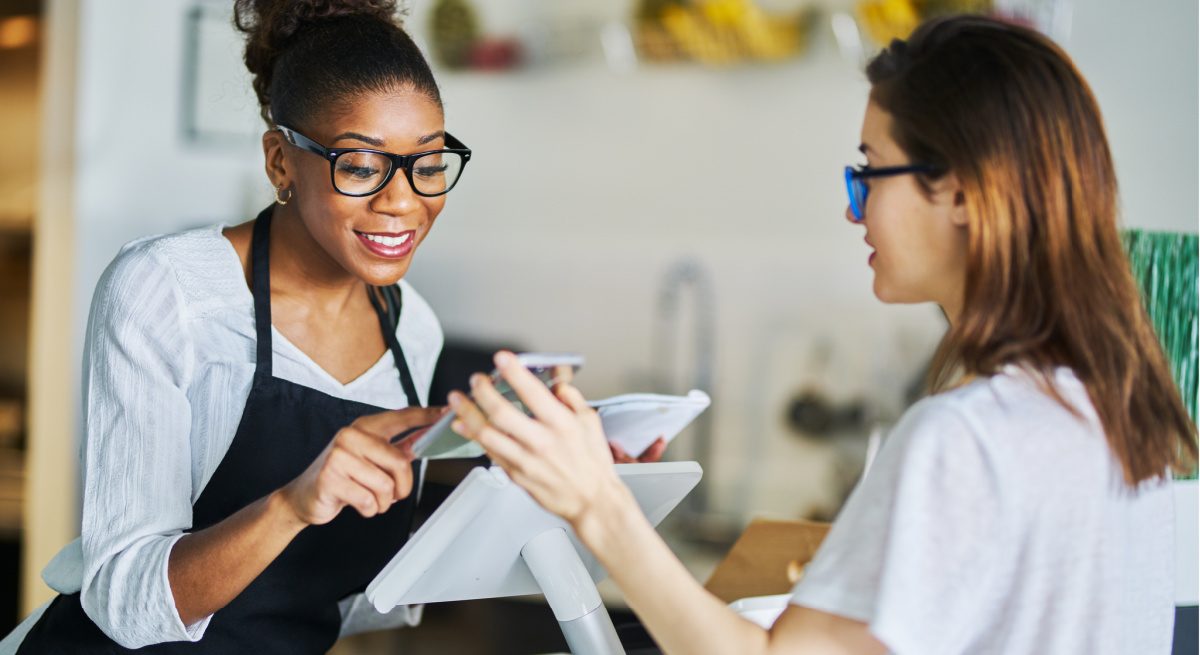Achieving Your Best Digital Customer Experience During COVID-19
4 Min Read By Gregg Ostrowski
As the COVID-19 pandemic continues to affect the ways we live, work and dine, the restaurant industry has been experimenting with different ways to adapt and continue serving customers who cherish dining experiences. The transition to digital experiences is an issue every industry is having to address, but is uniquely challenging in an industry where personal interactions are the norm and a critical part of the customer experience. This need to rapidly adjust how we deliver services has accelerated the pace of digital transformation across industries, including food service. Many states continue to struggle with the impact of COVID-19 and restaurants continue to adjust how they adapt and serve consumers living in lockdown who are craving spending time at restaurants and their emotions and expectations are both running high.
The Front Counter Is Now Digital
Digital engagements with customers are going to remain the norm long after the COVID-19 pandemic, as customers come to appreciate the convenience of curbside pickup and in physical locations, contactless payment options and online or mobile ordering.
Digital engagements with customers are going to remain the norm long after the COVID-19 pandemic.
Now, your online ordering app or website is the modern equivalent of a server taking the order, delivering the food and processing the payment. Through the use of features such as application performance interfaces (APIs), these digital platforms extend far beyond your brick-and-mortar location or advertising efforts. However, the additional layers of integration into multiple new apps and sites can lead to potential issues, especially if application monitoring is not part of your digital toolkit.
At the end of the day, restaurants are in a unique position because there is a balance of in person services as well as a digital presence on how your customer interacts with your brand and spends their money. People want personalized service while maintaining a safe distance. Their experience can mean the difference between increased loyalty or the customer abandoning their journey through your system altogether, resulting in a loss of sale. Restaurants are in a tough position because most have lost revenue during lockdowns and have the added pressure to provide a pleasant experience for customers because they could easily choose another restaurant to dine with that provides them with the experience and safety they desire. Even though digital can help with ordering, a courteous greeting can go a long way.
Monitoring Should be a Priority
Whether it’s delivery, curbside pickup or ordering ahead to dine in at a restaurant, maintaining a smooth digital customer journey is a necessity, and outages or bugs in an application or website can be just the thing to turn a customer away. A valuable metric restaurants need to know is the percentage of customers that start the ordering process and actually complete their order. This can be an indicator the application is working well, is too confusing or not performing to meet their customer’s expectation. According to the recent Agents of Transformation Report from AppDynamics, 81 percent of IT professionals said the COVID-19 pandemic created the biggest technology pressure their organization ever experienced, with 88 percent reporting digital customer experience is now the top priority.
Respondents to the AppDynamics survey also said they predict there will be more focus on application security and disaster recovery in their organizations following the pandemic, and 83 percent of respondents also indicated they believe there will be increased investment in tech that monitors digital customer experience. This combination places a greater degree of responsibility on the shoulders of IT professionals and technologists, and leadership at restaurant organizations need to consider investing the time and resources to develop the monitoring capabilities and support the people who will be integral to their business’s digital experience success.
Invest in Your IT
Restaurant management software vendor Upserve found that, in large suburbs across the U.S., online ordering grew 3,868 percent from February to April. As the U.S. continues to experience various stay-at-home orders, this trend will likely continue. As businesses in the restaurant and retail industries prepare for prolonged digital-only and digital-first interactions, IT professionals are increasingly in the spotlight to implement sustainable solutions that keep the customer experience priority. According to an AppDynamics survey, 61 percent of IT professionals feel under more pressure at work than ever before.
These IT professionals in the restaurant industry work behind the scenes, monitoring for problems, collecting data and addressing any issues that need to be resolved when there’s little time to waste getting things back up and running. They represent some of the most important people in a larger organization, not just in the short term, but for developing a long-term strategy for how and when we will come out on the other side of this pandemic.
Alternatively, smaller restaurants do not typically have the budget to invest in IT so need to rely on third party services to fill their gaps. These types of businesses should demand the third parties they work with provide metrics on usage of their applications to ensure they have the right vendor filling this gap. If they do not, they may be losing business without even knowing.
It is up to these teams to retrieve data and offer insights to give business leaders and key decision makers the information they need to stay up-to-date and address customer needs immediately. Utilizing this data and leaning on IT professionals during the COVID-19 pandemic and beyond can be the difference in making sure your restaurant business not only survives this difficult time – but thrives beyond it.


